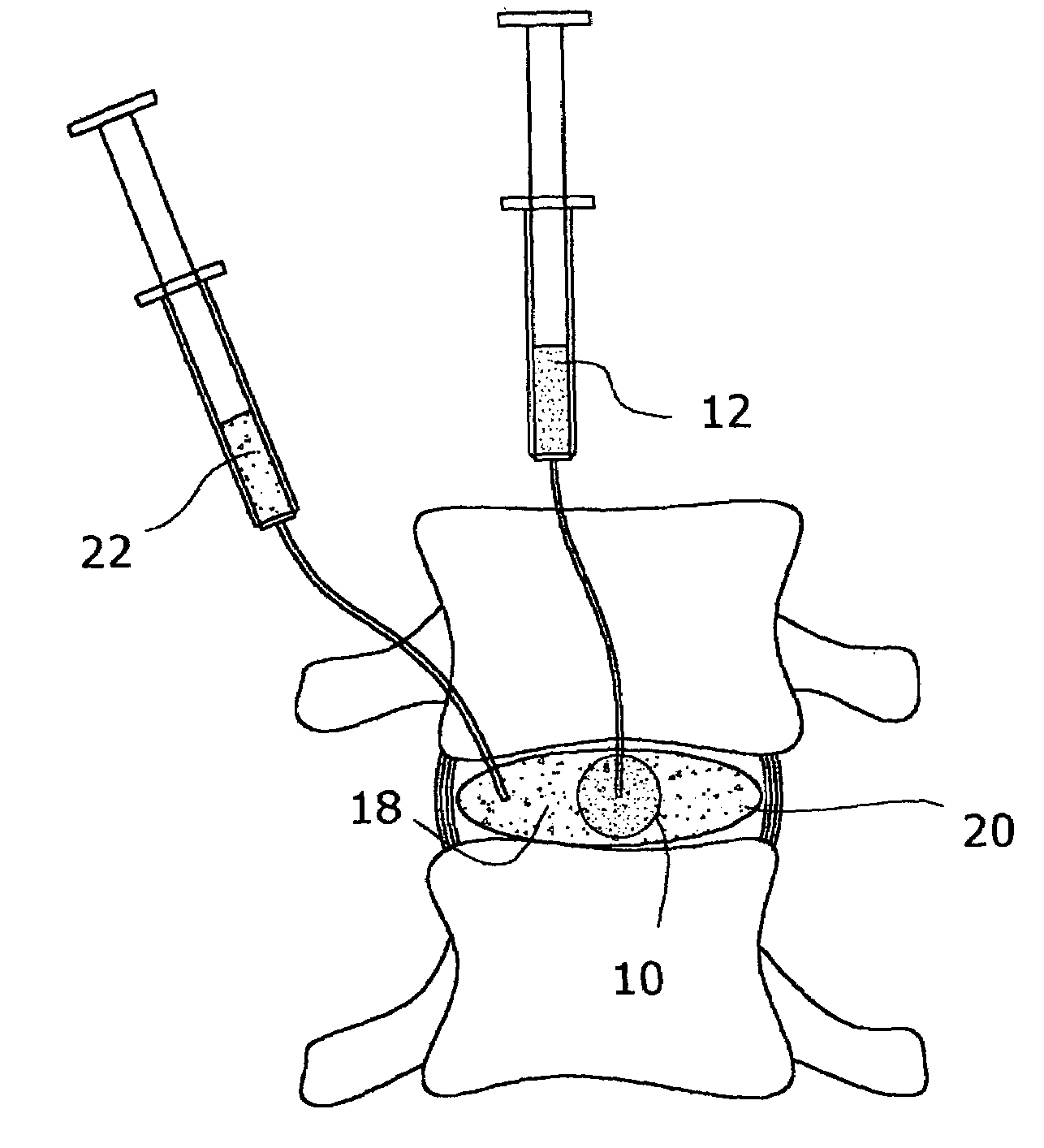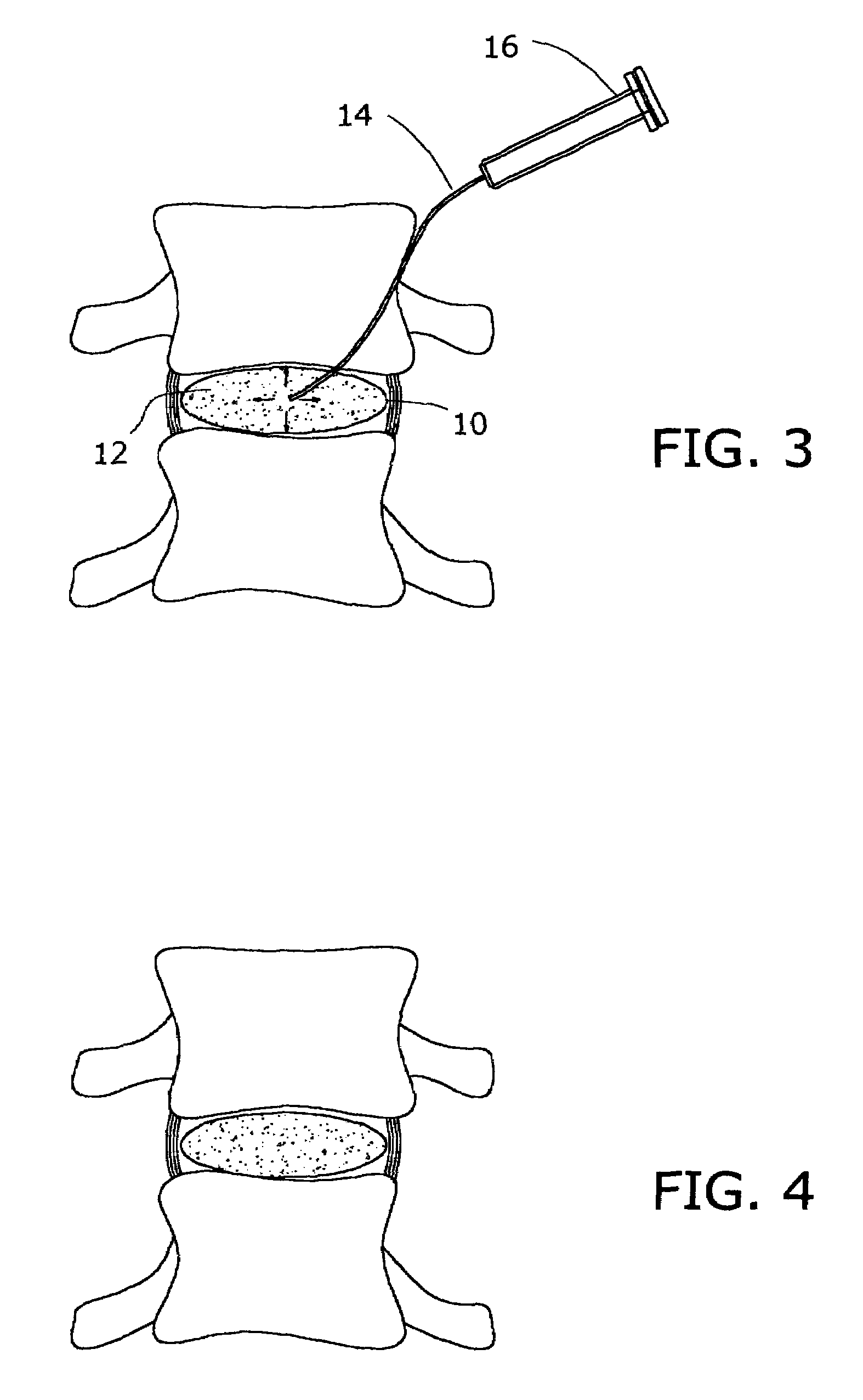Inflatable nuclear prosthesis
a technology of intervertebral discs and prostheses, applied in the field of orthopaedic surgery, can solve the problems of reducing the height and mobility of the disc space, reducing the normal stress of the disc, and loosing the surrounding support ligaments of the spine, so as to reduce or eliminate abnormal stresses, restore sufficient disc space, and reduce the effect of stress
- Summary
- Abstract
- Description
- Claims
- Application Information
AI Technical Summary
Benefits of technology
Problems solved by technology
Method used
Image
Examples
first embodiment
[0029]In the invention, a deflated balloon 10 (FIG. 1) is placed within an intervertebral disc in which a cavity has been formed by a complete nuclectomy. The balloon is then inflated with a liquid contrast medium (not shown), while the area is observed by the surgeon, who terminates inflation when the desired distension is observed. Then the contrast medium is completely withdrawn, and the withdrawn volume is noted.
[0030]Next, an identical volume of a hardenable material 12 in liquid form is injected through a conduit 14 connected to a source of the material under pressure, for example a syringe 16. As material enters the balloon, the balloon expands as suggested by the arrows in FIGS. 2 and 3. Note that the annular fibers become more taut as the pressure increases the separation distance between the vertebrae.
[0031]Once the predetermined volume of the hardenable material has been injected, it is allowed or induced to harden. When the material has hard hardened at least to the poin...
second embodiment
[0032]In the invention, two balloons, one inside the other, are inserted into the disc. Using volume measuring and filling techniques similar to those described above, the inner balloon 10 is filled with a first liquid material 12, and the chamber 18 formed between the inner balloon 10 and the outer balloon 20 is filled with a second hardenable material 22 in liquid form. The first liquid material 12 is preferably hardenable, but to a substantially lesser hardness that the outer material, so that cured construct is relatively soft on the inside, and relatively harder on the outside, like a natural disc. The inner portion thus retains greater elastic properties to provide a cushioning effect, whereas the outer portion has little or no elasticity, to preserve the strength and integrity of the entire construct.
PUM
| Property | Measurement | Unit |
|---|---|---|
| hardenable | aaaaa | aaaaa |
| physical properties | aaaaa | aaaaa |
| elasticity | aaaaa | aaaaa |
Abstract
Description
Claims
Application Information
 Login to View More
Login to View More - R&D
- Intellectual Property
- Life Sciences
- Materials
- Tech Scout
- Unparalleled Data Quality
- Higher Quality Content
- 60% Fewer Hallucinations
Browse by: Latest US Patents, China's latest patents, Technical Efficacy Thesaurus, Application Domain, Technology Topic, Popular Technical Reports.
© 2025 PatSnap. All rights reserved.Legal|Privacy policy|Modern Slavery Act Transparency Statement|Sitemap|About US| Contact US: help@patsnap.com



